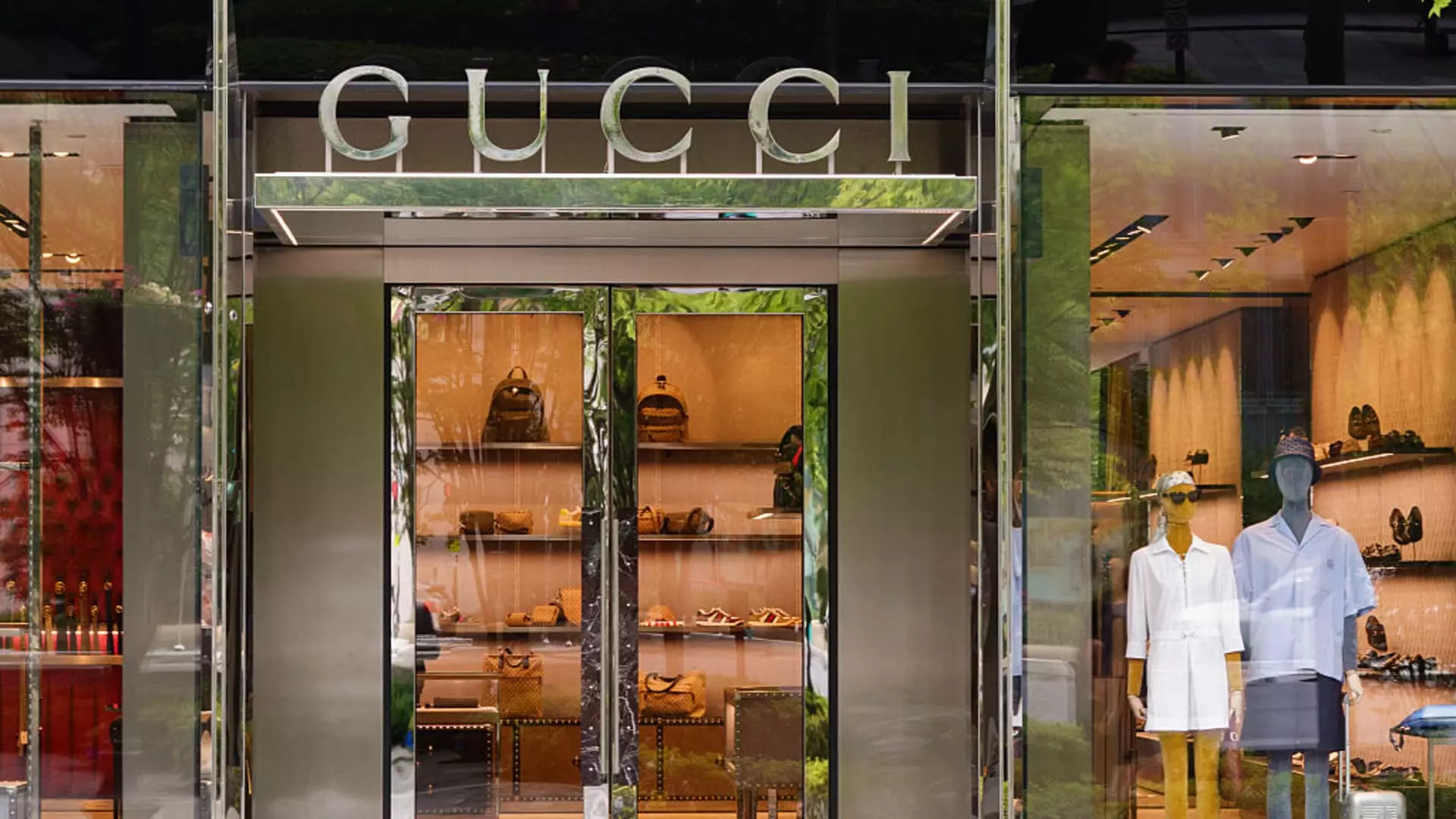The luxury fashion sector is notorious for its ever-changing landscape, influenced by consumer whims, economic factors, and shifting cultural narratives. The recent appointment of Luca de Meo as CEO of Kering marks a pivotal moment for this beleaguered French fashion house. Following the departure of long-term leader François-Henri Pinault, the company is betting that a fresh perspective—this time from the automotive industry—can reinvigorate its most troubled brands, primarily Gucci and Saint Laurent, which have been struggling to maintain their luster in a competitive marketplace.
Equity markets responded positively to news of de Meo’s hiring, with Kering shares surging over 10% upon the announcement. His track record at Renault, where he successfully orchestrated a dramatic turnaround, suggests that he brings to the table an arsenal of brand management and marketing skills that could align well with Kering’s needs. However, while the initial market reaction seems promising, one must scrutinize the deeper implications of this strategic shift. Is Kering’s decision to bring in an outsider a stroke of brilliance, or is it indicative of a desperate gamble aimed at staving off further decline?
The Weight of Past Failures
For Kering, the past two years have been nothing short of disastrous. The firm has witnessed a staggering 60% plummet in its stock price, primarily driven by significant profit warnings and a faltering Gucci brand that used to represent the pinnacle of luxury. The stark contrast between its historical success and its current predicament highlights the urgency and magnitude of the challenges that de Meo will soon face. Can an executive from the automotive world realistically navigate the intricacies of fashion, where artistic vision intertwines with brand identity?
While analyzing the situation, one cannot ignore the legacy that Pinault leaves behind. Although he played a crucial role in establishing Kering as a leading luxury conglomerate, his tenure has also become synonymous with missed opportunities and mismanagement within the Gucci division. As such, the new CEO must navigate not only the operational realities but also the perception of prior failings, all while rallying a workforce that may feel disillusioned and overlooked.
The Risks of Outsider Influence
While de Meo’s experience in revamping Renault may indeed provide a framework for success, it also raises questions about the feasibility of such a transition. The luxury sector demands not just astute business acumen but an intimate understanding of fierce brand loyalty and a nuanced grasp of consumer culture. Automakers frequently measure success in quarterly financial results; can de Meo translate this mindset into a world where heritage, craftsmanship, and emotional resonance are paramount?
The pressure will mount quickly for de Meo, especially given the luxury sector’s growing strain. Consumers increasingly gravitate toward established brands, prompting apprehension surrounding Kering’s efforts to re-engage their clientele. If de Meo’s strategies lag behind in revitalizing both Gucci and Saint Laurent, Kering risks extending its downturn and losing even more ground to its competitors. The luxury goods sector thrives on perception, and failure to evoke excitement could mark a significant setback.
The Path Ahead: A Bumpy Road of Transformation
Analysts like Thomas Chauvet have voiced things to consider, specifically that while de Meo has an impressive résumé, the complexities involved in rejuvenating legacy brands like Gucci and Saint Laurent are monumental. The financial implications of these changes could result in substantial risk, as consumer preference increasingly leans toward established luxury labels over those attempting to redefine themselves.
Ultimately, Kering’s decision to appoint de Meo serves as both a daring revitalization strategy and a potential sinking ship. It presents a clear juxtaposition: the promise of reinvention clashing against the ghosts of past mismanagement. For the brand’s shareholders, the hope of recovery rides on de Meo’s unique blend of automotive innovation meeting the storied artistry of high fashion. Will he be able to rewrite Kering’s narrative, or will this ambitious move merely accelerate its decline? As this drama unfolds, all eyes will be on the former Renault chief, awaiting either a dazzling comeback or more dismal headlines.

